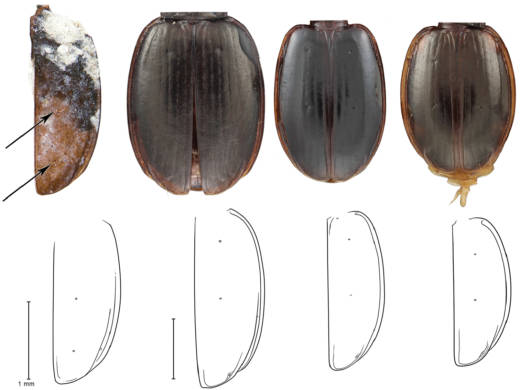Millions of years ago, a little beetle lived among beeches and buttercups on a sparely vegetated tundra at the head of a fjord in Antarctica.
The beetle was small — less than a centimeter long — and it was brown with the typical six legs and two antennae attached to a body protected by a hard shell.
The authors of a new paper announcing its discovery, published in the journal ZooKeys, named it Antarctotrechus balli, or A. balli for short. The first part is a combination of the place the specimens were found, and the formal name for its modern relatives. The second part, balli, is for the beetle scientist George Ball, “in celebration of his 90th birthday,” the paper says.
Entomologists Allan Ashworth of North Dakota State University and Terry Erwin of the Smithsonian Institution wanted to honor Ball’s work mentoring young beetle researchers over the years. Going forward, the authors ask that the long-extinct insect be known as Ball’s Antarctic Tundra Beetle.
Evidence of A. balli‘s existence was not easy to find. It lived in Antarctica during the mid-Miocene period, between 14 and 20 million years ago, when the continent was much warmer than it is now.


9(MDAxOTAwOTE4MDEyMTkxMDAzNjczZDljZA004))
